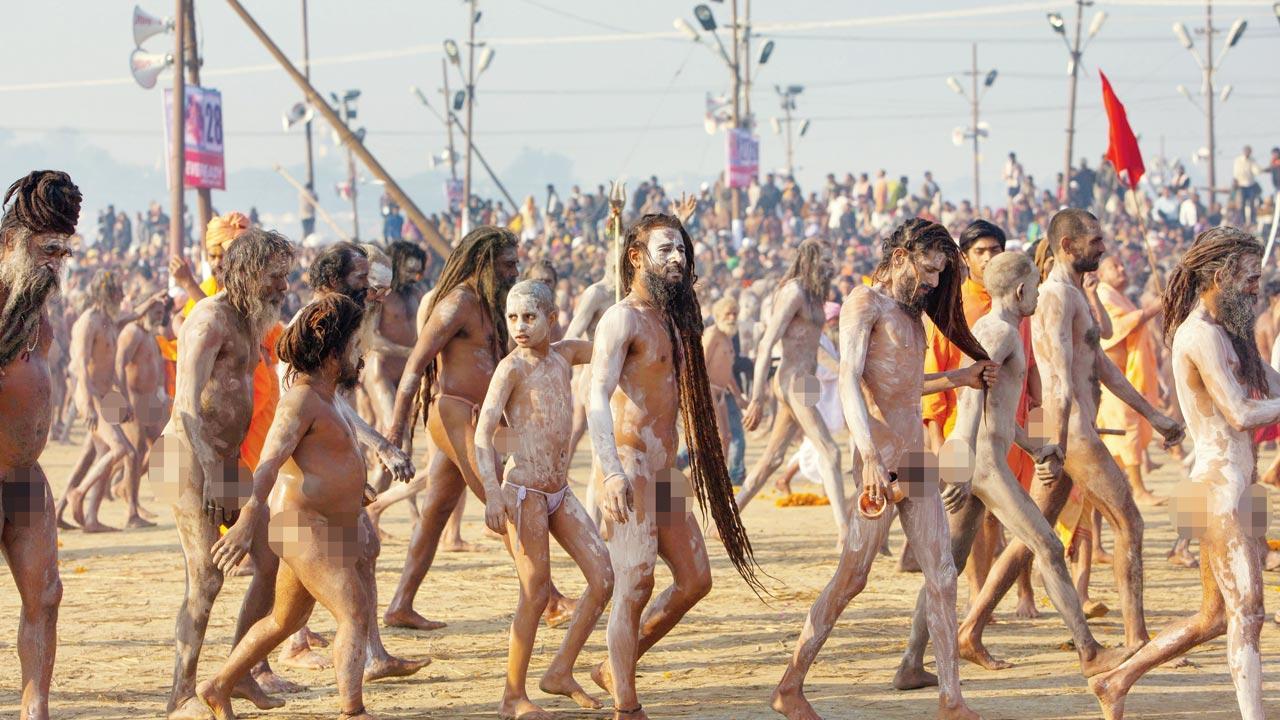Art historian-curator Alka Pande’s new book explores the many ideas, beliefs and myths around the phallus, and why it continues to be the centre of civilisation

Through yoga it is believed that the procreative seed travels from the lowest chakra to the highest chakra in the human spine and transforms sexual energy into mental energy. Pic/Getty Images
Revered and reviled in equal measure, the phallus occupies a unique place in the socio-cultural history of the world. Delhi-based art historian-curator Alka Pande has been most amazed by how the male organ continues to inspire art, influence religion, and illuminate myth and erotica.
ADVERTISEMENT
The result is a new book, Pha(bu)llus: A Cultural History (HarperCollins India), which is a one-of-its-kind exploration of ideas and beliefs around the phallus. Three years in the making, the visually-heavy work also brings together the extensive research done by Belgian scholars and urologists Johan Mattelaer and Philip Van Kerrebroeck, and psychoanalyst-clinical psychologist Amrita Narayanan.
Pande’s own interest in the subject took root nearly two decades ago, when she began working on the book, Ardhanarishvara, the Androgyne: Probing the Gender Within. In studying the concept of the Ardhanarishvara—the composite male-female figure of Lord Shiva together with Parvati—she came across several images that showed an “erect phallus”. Her later work, Kamasutra: The Quest for Love enabled her to “explore the lovemaking of Indian gods, and erotic in Indian art.” It translated into an art show at the Pinacothèque de Paris, for which Pande had borrowed from the works of Mattelaer and Kerrebroeck. “The phalluses they collected had interesting stories,” she recalls in a telephonic chat.
Alka Pande
Keen on tracing the history of the phallus vis-à-vis the Shiva lingam, which is “worshipped as an anthropomorphic form”, she decided to collaborate with the Belgian researchers, who studied the phalluses across Europe, East Asia and even the indigenous communities. Narayanan, she says, helped throw light the psychological imprint of the phallus, especially as an object of sexuality and desire.
“If you look at the lingam, it protrudes outwards. It also requires a very powerful gaze to absorb it. How many can look directly at a naked, erect phallus?” asks Pande, explaining why the male organ has come to embody “power and magic”.
She remembers coming across the Naga sadhus, who are normally unclothed and have no qualms in displaying their phalluses. Some even pierce and decorate it, stretching it to an extent that they can be wound around a stick. “I saw them at the Kumbh in Ujjain six years ago. One does feel a certain sense of reserve while getting close to them, but if you get over the initial hesitation, understanding their culture can be riveting.”
Also Read: Lesser-known engineers, contractors who sculpted Bombay in colonial era
Like the Nagas, the Karamojong tribe from north-eastern Uganda, also employs penile elongation techniques. For them, the phallus symbolises strength. By the time a young boy has reached his teenage years, he can carry up to 10 kg on it.
Pande’s book thus, is a primer of sorts, contextualising the complex history of the phallus, across centuries and civilisations.
In countries like Japan, Cambodia, Bhutan, Thailand, public sculptures, paintings and other curios like charms and amulets, offer deep insight into how phallic imagery has always been a constant. In Europe, it was both, abused and embraced in the Middle Ages, before it came to be sheathed in the prudish Victorian age.
Closer home, and what has primarily been the focus of Pande’s research, the lingam is considered most sacred, ascribed to Lord Shiva. “In Hindu temples, the lingam rests on the yoni, which represents the female aspect, and together they symbolise divine creation,” she writes in the book.
Myths and legends abound how it came to be worshipped. In one, angered by the Devas, Shiva threw his lingam in the Deodhar forest, burning everything around. It’s Brahma who tells the devas and rishis to worship Uma, the other name for Parvati, because “only she can make Shiva’s organ quiet”. “As a believer, and a woman of faith, I see these stories as received wisdom. It’s not about Shiva or his powerful lingam, but about asserting dharma, which is the right way of living, and the power of divinity and nature,” she says, adding, “For someone with a scientific bent of mind, this might be a whole lot of mumbo jumbo. But, this is how people once understood their culture.”
There are also the new-age feminists who’ve rejected the member, seeing at it as a tool of male subjugation and aggression.
It’s why Pande, who describes herself as an empowered woman, admits that writing on the phallus can sometimes seem like a daunting task. But, the author says, that she is at that point in her life, where she’s beyond gender. In this wonderful space, she can be “masculine one day and feminine the next day”.
 Subscribe today by clicking the link and stay updated with the latest news!" Click here!
Subscribe today by clicking the link and stay updated with the latest news!" Click here!






